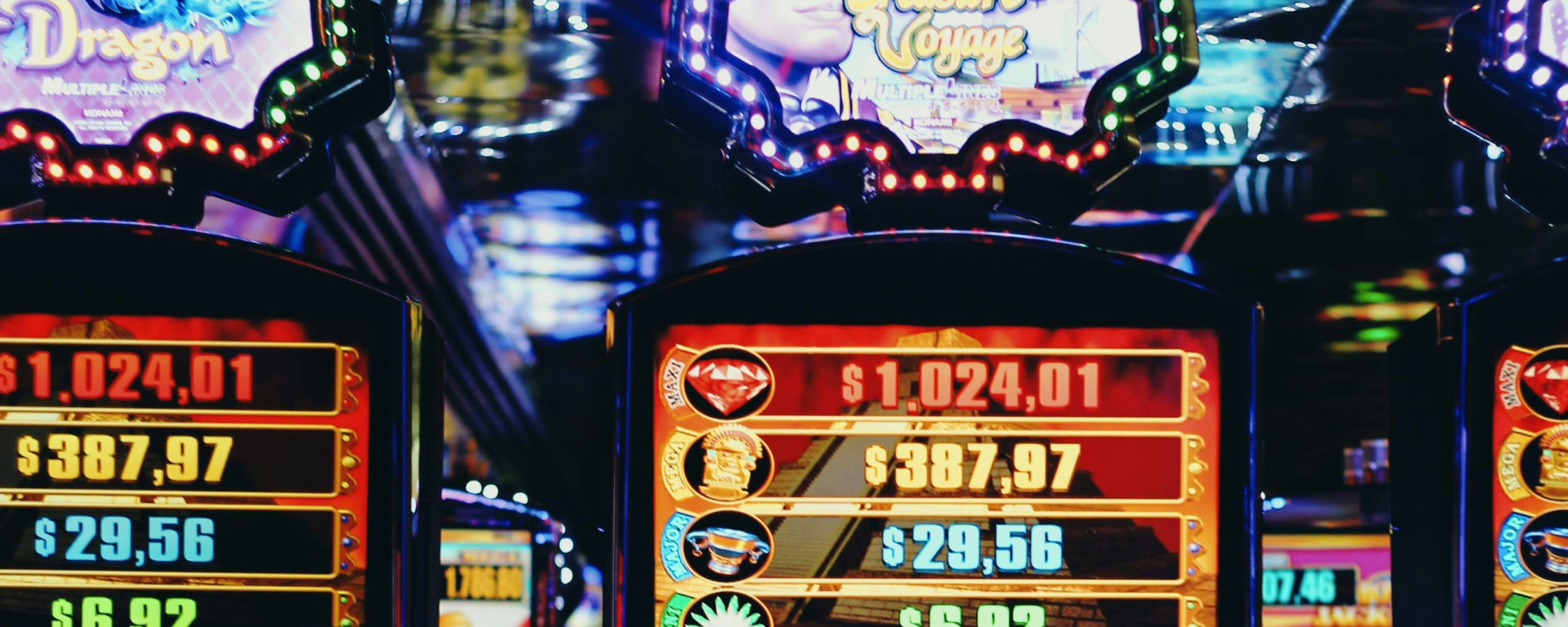Better Poker Performance with Brain Tech, Not Pills
When people think of high-performance athletes, poker players aren’t usually the first to come to mind. But make no mistake: elite poker demands intense mental stamina, rapid decision-making, emotional control, and the ability to read others under pressure — often for hours at a time.
And just like MMA fighters or pro athletes, many serious poker players are now turning to neurotechnology to stay sharp.
In fact, a study surveying nearly 200 poker players found that an overwhelming 73% of those using cognitive and performance enhancing medications (CPEMs) did so to improve focus, with others citing anxiety relief and staying awake. Substances ranged from prescription stimulants to alcohol and marijuana, often acquired informally and used without medical supervision (Caballero et al., 2016). The findings suggest that even amateur players are seeking every mental edge possible, even at potential risk to their health.
This raises an important question: what if there were non-invasive, evidence-based tools to improve focus, clarity, and mental stamina that poker players are seeking, but without the side effects?
That’s where transcranial photobiomodulation (tPBM) enters the conversation.
The Mental Skills That Separate Good Players from Great Ones
Poker is a strategic game that relies heavily on multiple cognitive functions, including working memory, attention, decision-making, emotional regulation, and theory of mind. Players must continuously process incomplete information, track opponents’ behavior, calculate odds, and adapt strategies in real time.
This engages executive functions, especially working memory, to hold and manipulate card and bet-related data. Selective attention is needed to filter out distractions and focus on relevant cues, while cognitive flexibility allows players to shift strategies when the game dynamics change. Additionally, inhibitory control helps suppress impulsive decisions, especially when bluffing or resisting risky bets. A strong theory of mind - the ability to infer others' thoughts and intentions - is also crucial, as players must anticipate opponents’ moves and detect deception. Together, these cognitive processes form the foundation of high-level poker strategy, combining analytical thinking with emotional discipline.
The Science Behind tPBM and How It Could Improve Your Game
Poker isn’t just a game of luck - every hand requires strategic thinking, emotional control, and the ability to read complex patterns. Research has shown that PBM can help with just that:
1. Enhanced Working Memory
Poker relies heavily on the brain’s ability to hold and manipulate information over a short period of time, better known as “working memory.” Studies have shown that PBM not only improves working memory through various cognitive testing, but that these results can last up to three weeks since the last tPBM session (Qu et al., 2022).
One study even found that using tPBM at 1064nm improved visual working memory capacity and increased occipitoparietal contralateral delay activity, but these findings were absent when using the 852 nm device (Zhao et al., 2022).
2. Improved Decision-Making and Attention
Poker demands razor-sharp decision making. One wrong move and it could cost you thousands. One mouse model study showed that exposure to infrared light not only improves working memory, but also made mice more considerate in their decision making (Michalikova et al., 2008). In turn, this elicited overall improved cognitive functioning.
These findings were not just limited to animal models either. Another study by Barret & Gonzalez-Lima (2013) found that humans treated with a 1064nm laser performed better on tasks related to sustained attention and reaction time, which are two contributing factors to the quality of decision making.
3. Improving Emotional Regulation and Reducing Mental Fatigue
Tilt - the emotional spiral after a bad beat - is every poker player’s worst enemy. Luckily, one study found that PBM supports more sustained positive emotional states as compared to the placebo control group (Barret & Gonzalez-Lima, 2022).
Another study also showed that PBM not only improved anxiety, stress, and depression scores, but also improved sleepiness (Zhang et al., 2025). Coupled together, these benefits can help you stay cool-headed and in the zone.
Biohackers Are Already Using tPBM, Why Not Poker Players?
While poker hasn’t caught up to MMA or NFL when it comes to recovery tech, biohackers and performance optimizers are early adopters. Biohackers like Ben Greenfield, Bryan Johnson, Jean Fallacara and Gary Brecka have all explored PBM as part of their performance and brain health routines.
As mental edge becomes as important as strategy, we may see PBM move from the biohacker niche to the poker mainstream.
You Can Try PBM for Yourself—Anywhere, Anytime
Devices like the Neuronic LIGHT make PBM accessible from home. With just 10–20 minutes a few times per week, users report better focus, calmer moods, and clearer thinking. It’s non-invasive, drug-free, and has no known side effects.
Unlike more clinical or stationary brain tech, the Neuronic LIGHT is specifically designed for portability, simplicity, and power — making it an ideal tool for poker players who travel often and need something easy to integrate into long tournaments or daily training.
- Battery-operated and wireless, it’s easy to use between hands, at the hotel, or even at the table if needed.
- Built-in presets, like Focus and Glow, mean you don’t need to be a neuroscientist to use it — just press a button and go.
- Its 1070nm wavelength targets the brain at a cellular level, supporting mitochondrial activity, blood flow, and cognitive clarity with every session.
- And compared to other bulky or complicated helmets, the LIGHT offers medical-grade performance in a sleek, travel-friendly design.
Want to Play Smarter, Not Harder? Here’s Your Edge
Poker players are already experimenting with nootropics and neuroenhancers to gain an edge. It’s really only a matter of time before this industry begins adopting science-backed neurotechnology to enhance mental performance and endurance.
As poker continues to evolve into a sport of high cognitive demand, tPBM may become as common as sunglasses and energy drinks at the table — but with far more impact.
Poker is a game of edges, and in a field where everyone is studying strategy and math, your brain might be the final frontier.
Photobiomodulation won’t make you a genius overnight. But if you’re looking to sharpen focus, improve mental stamina, and stay cool under pressure, it may be the edge you didn’t know you were missing.
In the world of high-stakes decision-making, every millisecond counts.
References:
Barrett, D. W., & González‑Lima, F. (2013). Transcranial infrared laser stimulation produces beneficial cognitive and emotional effects in humans. Journal of Neuropsychology, Neuropsychobiology, and Behavior, 23(4), 301–307. Retrieved from https://www.gwern.net/doc/nootropic/2013-barrett.pdf
Caballero, J., Ownby, R.L., Rey, J.A. et al. Cognitive and Performance Enhancing Medication Use to Improve Performance in Poker. J Gambl Stud 32, 835–845 (2016). https://doi.org/10.1007/s10899-015-9576-4
Michalikova, S., Ennaceur, A., van Rensburg, R., & Chazot, P. L. (2008). Emotional responses and memory performance of middle-aged CD-1 mice in a 3D maze: Effects of low infrared light. Neurobiology of Learning and Memory, 89(4), 480–488. https://doi.org/10.1016/j.nlm.2007.07.014
Qu, X., Li, L., Zhou, X., Dong, Q., Liu, H., Liu, H., Yang, Q., Han, Y., & Niu, H. (2022). Repeated transcranial photobiomodulation improves working memory of healthy older adults: Behavioral outcomes of poststimulation including a three‑week follow‑up. Neurophotonics, 9(3), 035005. https://doi.org/10.1117/1.NPh.9.3.035005
Qin Yang, Xiujuan Qu, Can Sheng, Xing Zhao, Guanqun Chen, Xiaoni Wang, Yuxia Li, Wenying Du, Xiaoqi Wang, Yu Sun, Xiaobo Li, Haijing Niu, Ying Han, Transcranial photobiomodulation improves functional brain networks and working memory in healthy older adults: An fNIRS study, NeuroImage, Volume 316, 2025, 121305, ISSN 1053-8119, https://doi.org/10.1016/j.neuroimage.2025.121305.
Zhang, X., Miao, X., Jiang, H., Ren, Y., Huo, L., Liu, M., & Chen, H. (2025). Advanced intervention effects of pulsed and steady transcranial photobiomodulation on sleep, mood, and EEG signal regulation. Journal of Biophotonics, 18(6), e70004. https://doi.org/10.1002/jbio.70004
Zhao, C., Li, D., Kong, Y., Liu, H., Hu, Y., Niu, H., Jensen, O., Li, X., Liu, H., & Song, Y. (2022). Transcranial photobiomodulation enhances visual working memory capacity in humans. Science Advances, 8(48), eabq3211. https://doi.org/10.1126/sciadv.abq3211














